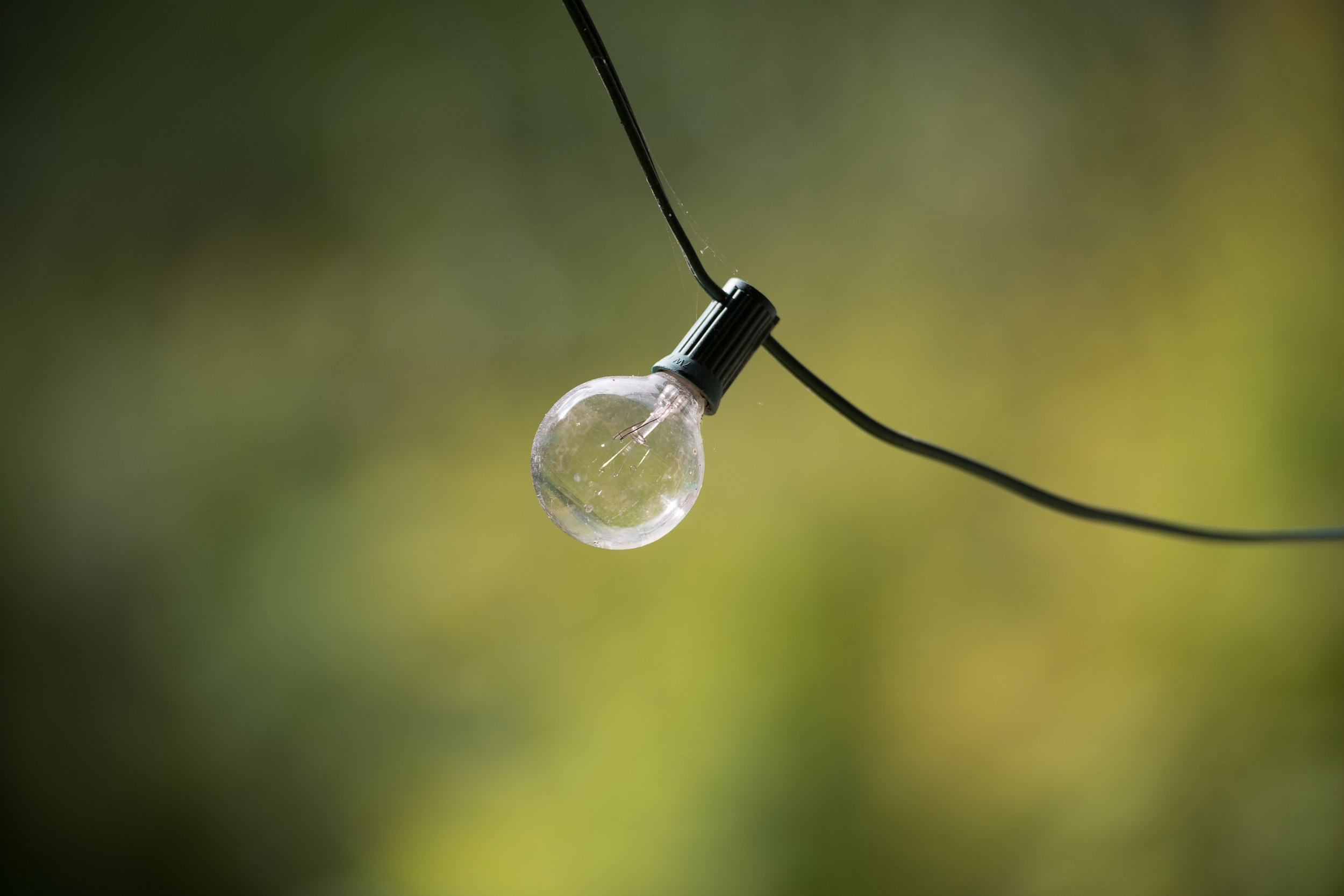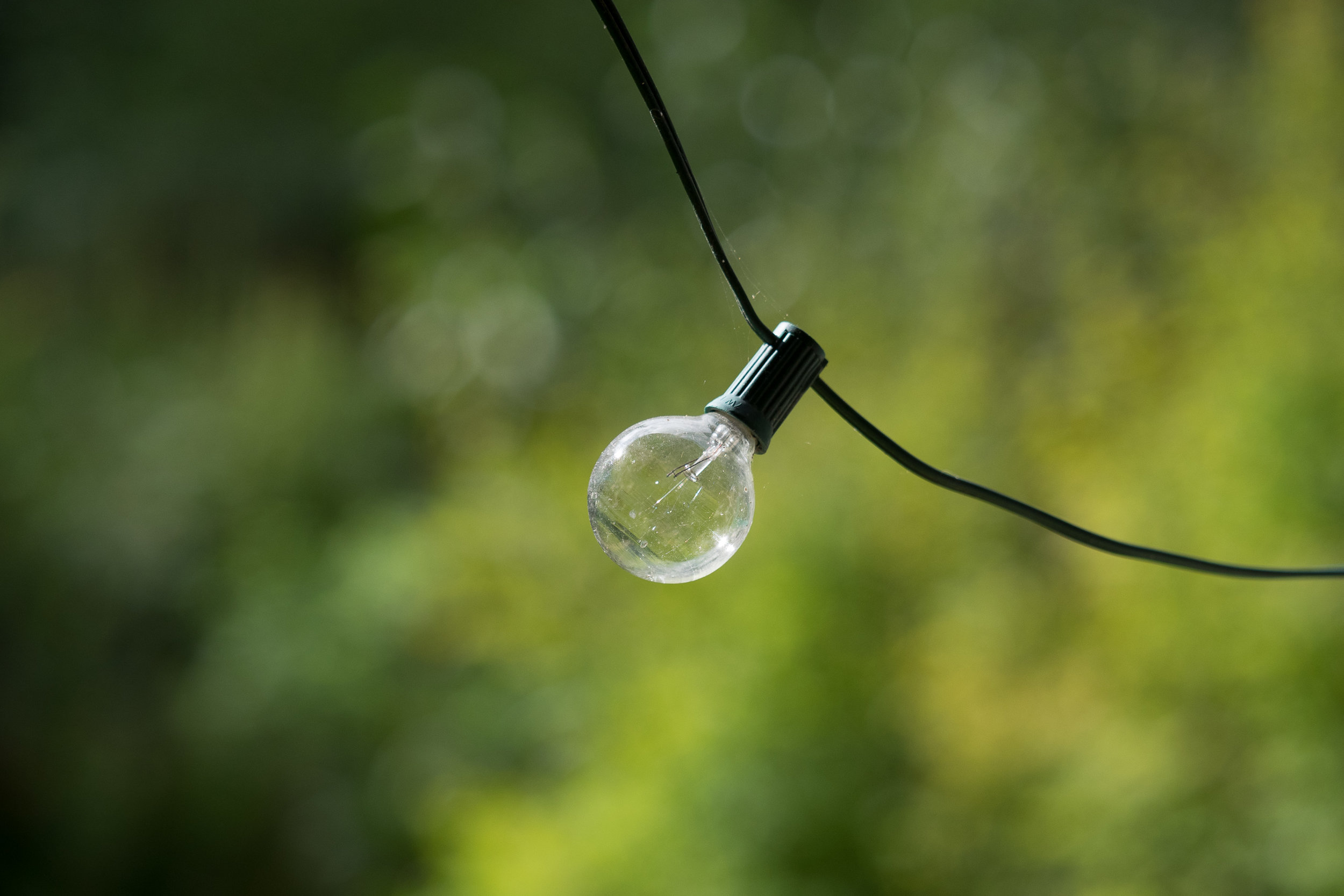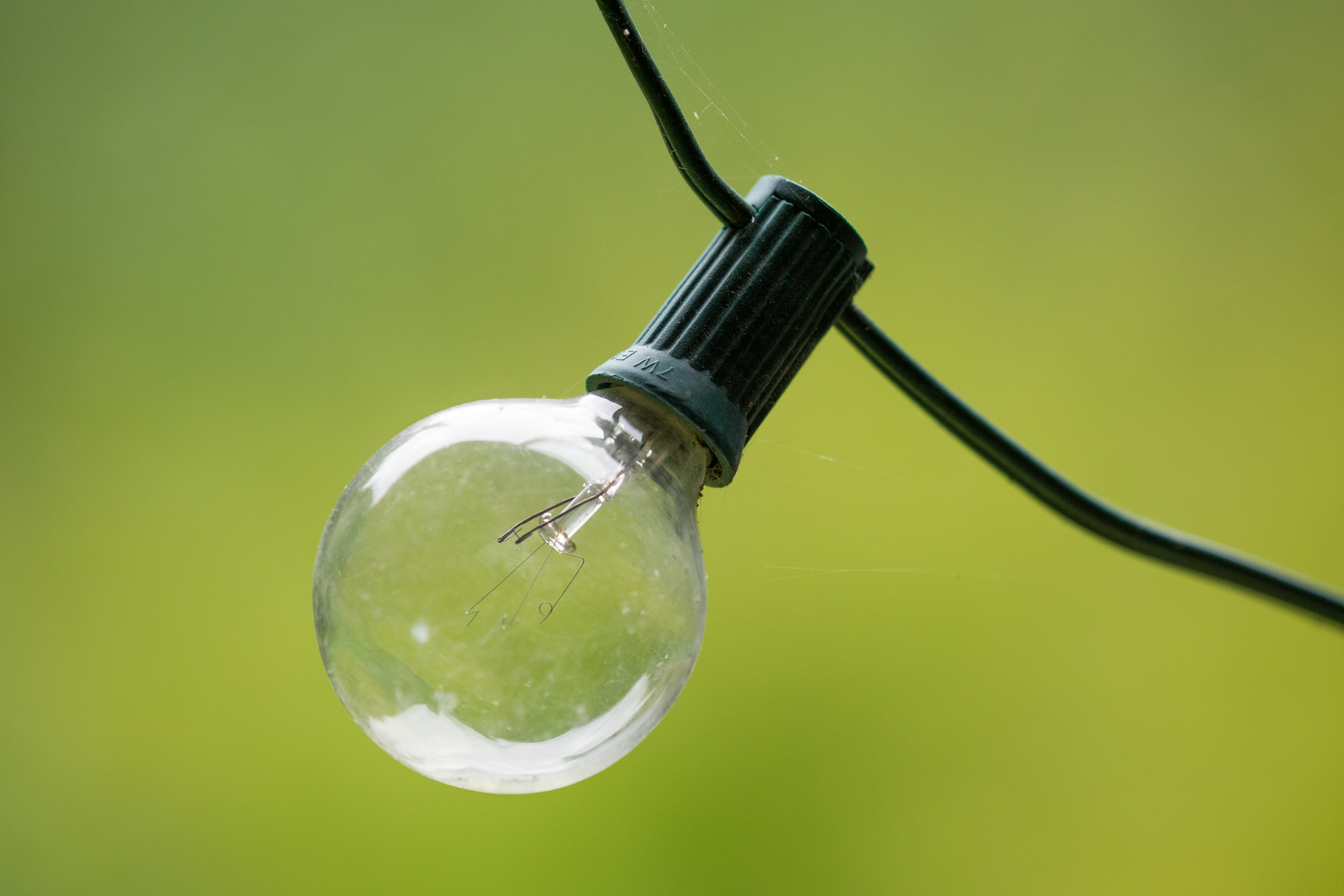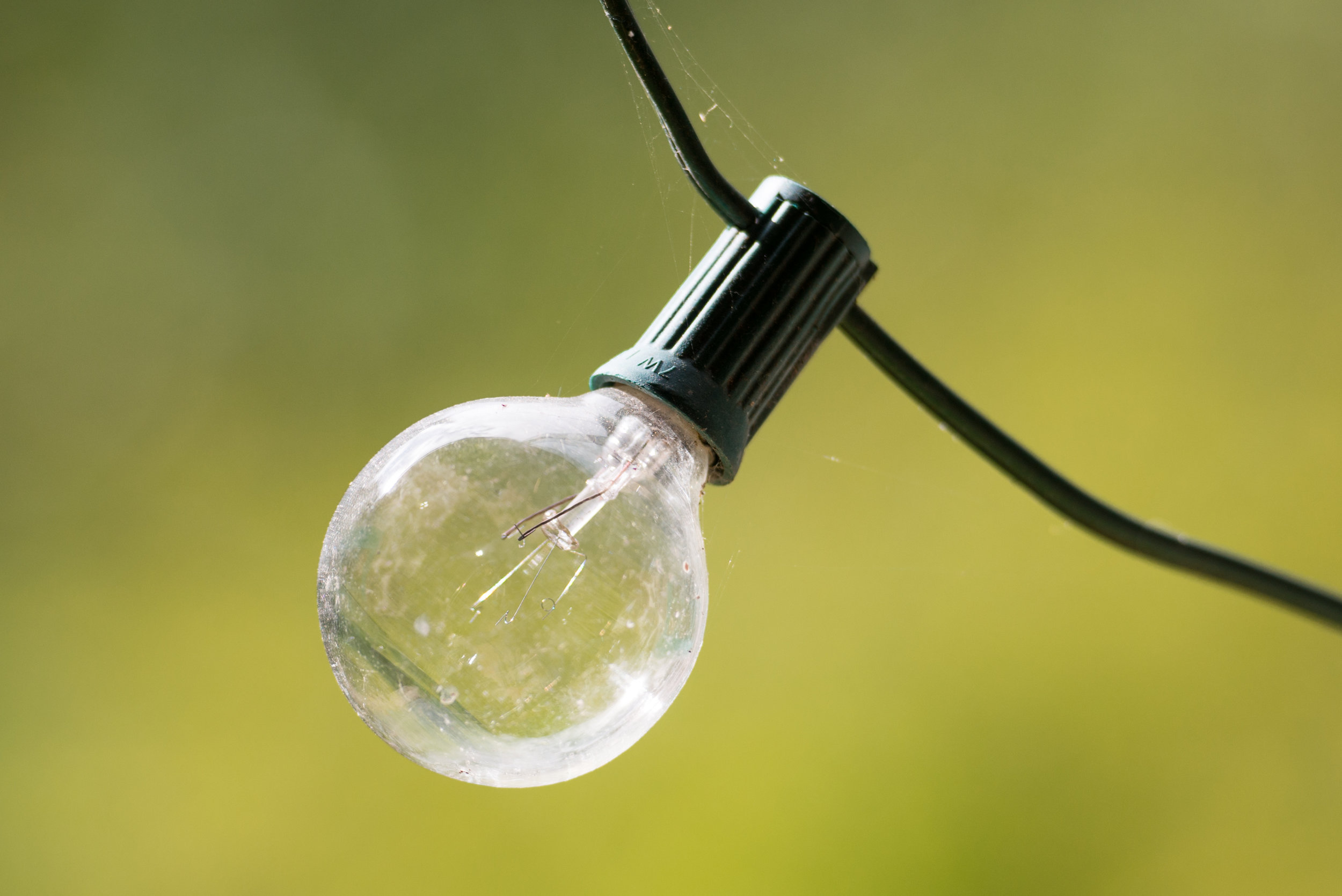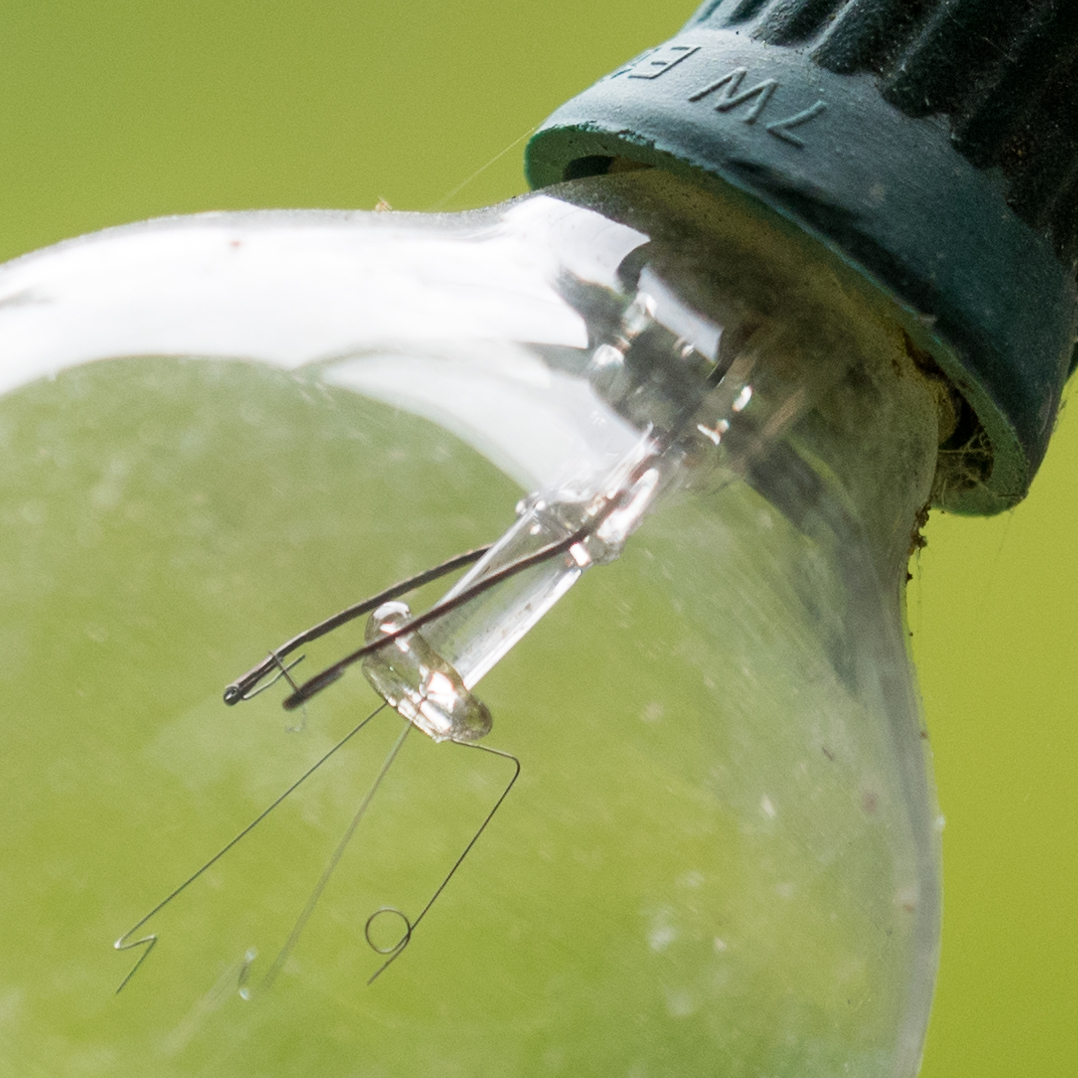About that Bokeh
So there's been some talk recently about "bokeh" or ぼけ as the Japanese would have it, which in English means "blurring." The two camps, "full frame" and "micro four-thirds," are jostling and elbowing. I thought I'd take a personal look into it and see what I can see. My scientific test (not!) used a Nikon D800 with 70-200mm f/2.8 VRII, pitted against an Olympus OM-D E-M1 with the highly touted 40-150 f/2.8 PRO (equivalent to 80-300 f/5.6, if I understand correctly). My test was simple: I just wanted to take the same or similar picture, of the same foreground item, occupying roughly the same amount of viewfinder space - so they would be comparable, say, if I printed both shots without doing any cropping.
Apples for apples: no crop
Hey that's a good pun.
Here were my constants:
- Open aperture (f/2.8 in both cases)
- Lowest ISO (200 on the E-M1, 100 on the D800).
- Size of light bulb in viewfinder (zoomed to match, subjectively)
- 4x6 aspect ratio (which reduces the "lowly" m43 camera to a truly pathetic 14.1 megapixels).
Here were my variables:
- Focal length (75mm aka 150mm on the Olympus, 200mm on the Nikon)
- Distance to subject (not sure, but it varied)
Here are the results:
And the winner is... well, if you like creamy bokeh, I'd say the full-frame D800 wins, hands down.
But then I got to thinking. Is this a fair fight? After-all, the 40-150 has a much stronger zoom and in this competition, it was only zoomed to 75mm (150mm equivalent). Also, the 40-150 has a much closer focus distance. So I could have stood closer. On the other hand, the D800 with 70-200 has more than double the pixels - 36mp vs a measly 16 for the Oly. So maybe it might be an idea to move the playing field - in both directions.
So with the Olympus I zoomed in to 150mm and moved a bit closer to the light bulb, to reach its minimum focus distance. The Nikon was already max'd out at 200mm and taken at its minimum focus distance. So in this second comparison, the only thing that changed is I zoomed in all the way with the Olympus. I then took the previous Nikon picture, and cropped in so that the size of the lightbulb matched that of the Olympus. The crop is shown below. Note that drops the resolution of the Nikon D800 from 36 megapixels, to a 7.1 megapixels. And that just shows how much cropping you can get away with on a 36mp camera - an undeniable advantage of full-frame and one that I take advantage of all the time, particularly in sports photography where I can 'cheat' my 70-200 up to 100-300 just by shooting in crop mode at 15 megapixels. Of course, with the Olympus, I don't need to cheat. Bug I digress.
Oranges with Oranges: crop to subject
So now that we have two light bulb pictures where the bulb itself is at the same 'size', full resolution, and where both lenses were zoomed in fully. Here are the results.
Hmm. Not quite so obvious, in this case, d'ya think?
Ok let's pixel-peep
I don't know about you, but I just can't resist pixel peeping. It's what men do to each other when they are standing at the urinal. We just can't resist comparing. Actually to me, this means absolutely nothing. But I'm going to do it because so many people enjoy it. Here we are, same photos as above, now zoomed in at full res (click to zoom).
Have fun!

